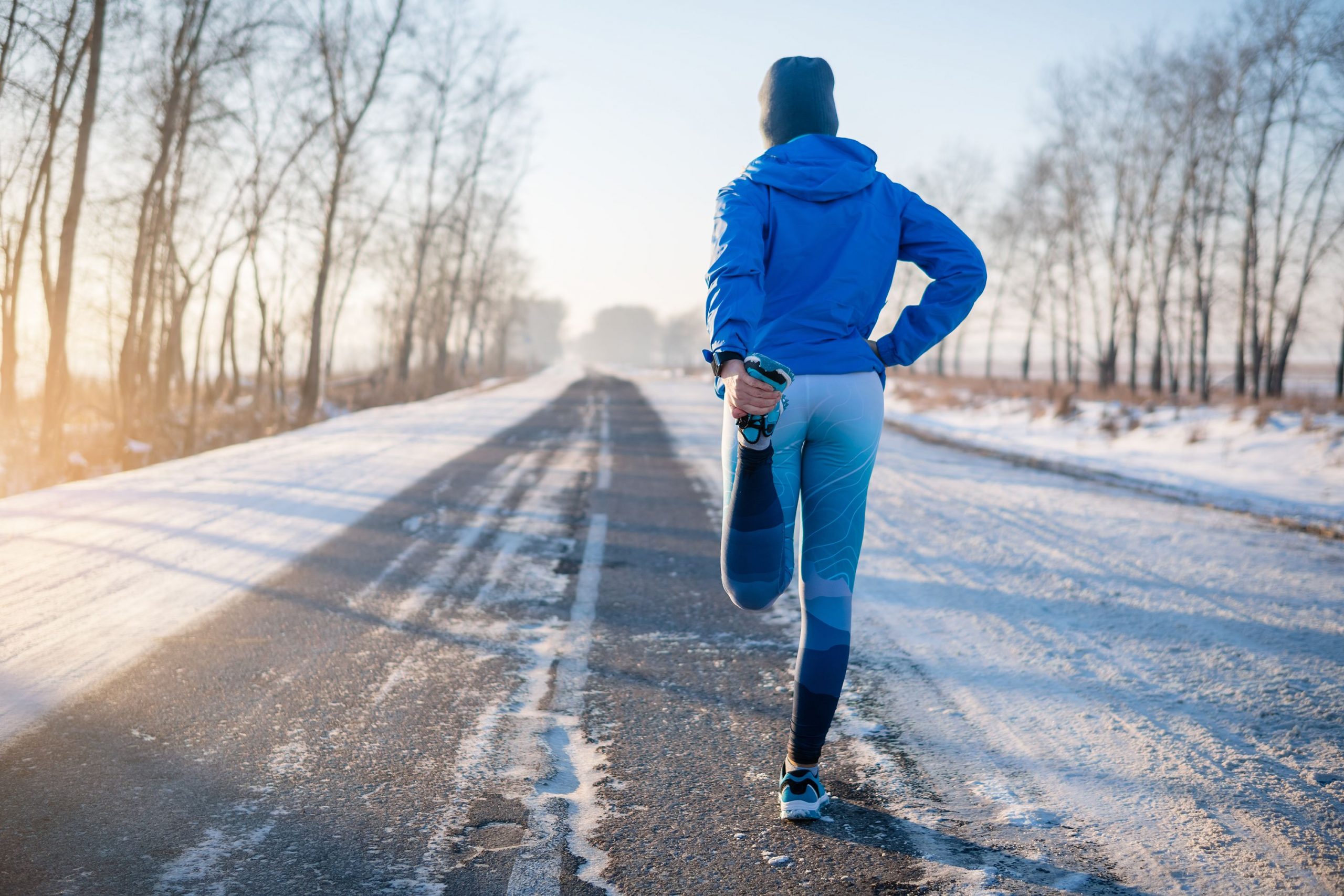As the cold embrace of winter settles in, sports enthusiasts remain determined to stay active despite the frigid temperatures. However, as the mercury plummets, the risk of encountering common sports injuries like back pain, torn muscles, and sprained ankles becomes increasingly significant. Today we dive into Cold Weather Sports Injury Prevention. Let’s go into the details of these injuries, uncovering the science behind their prevalence in cold weather, and exploring comprehensive prevention and management strategies to ensure you enjoy your favorite activities safely throughout the winter.
1. Back Pain in Cold Weather
The Science Behind It: Back pain, especially in cold weather, often results from a combination of factors intensified by low temperatures:
a. Muscle Tightening and Spasms: When exposed to cold weather, muscles tend to constrict and tighten, increasing the likelihood of spasms and strains, primarily in the lower back.
b. Reduced Blood Flow and Oxygen Supply: Cold weather can slow down blood circulation to the muscles and joints in the back, limiting their access to vital oxygen and nutrients. This diminished supply makes them more prone to discomfort and injury, leading to chronic back pain issues.
Prevention and Management Strategies: To ward off back pain and effectively manage it in cold weather, it’s crucial to:
- Incorporate a regular regimen of back-strengthening exercises to improve flexibility and provide better support to the spine, mitigating the risk of chronic back pain.
- Maintain proper posture while engaging in sports or physical activities to reduce the strain on your back and prevent acute episodes of back pain.
- Invest time in thorough warm-up routines, encompassing dynamic stretches and light cardio exercises to relax and prepare your back muscles for physical exertion.
- Employ heat therapy, such as Re+ heating muscle serum, heating pads or warm baths, to alleviate acute back pain and improve blood flow.
- Explore non-impact exercises like swimming or yoga to enhance back flexibility and alleviate chronic back pain symptoms in cold weather.
2. Torn Muscles in Cold Weather
The Science Behind It: Muscle tears are more common in cold weather due to the increased tightness and lack of adequate warm-up:
a. Muscle Tightening and Reduced Flexibility: Cold temperatures have a significant impact on the elasticity and flexibility of muscles. Without proper warm-up, this heightened tension can lead to muscle tears, most frequently occurring in the hamstrings and quadriceps.
Prevention Strategies: To prevent muscle tears and manage cold-weather muscle injuries:
- Prioritize an extensive warm-up routine, encompassing dynamic stretches and light cardio exercises to relax and prepare your muscles for exertion, reducing the likelihood of muscle tears.
- Pay close attention to your body’s signals; if you experience any unusual discomfort or tension, take a break to prevent overexertion, which could lead to muscle tears.
- Dedicate time to regular strength and flexibility training to enhance muscle health and reduce the risk of cold-weather muscle injuries, including muscle tears.
3. Sprained Ankles in Cold Weather
The Science Behind It: With icy and slippery surfaces more prevalent during the winter, sprained ankles become a common cold-weather injury:
a. Icy Surfaces and Inadequate Footwear: Slippery, icy terrains significantly heighten the risk of slips and falls, which can ultimately result in sprained ankles. Choosing improper footwear with insufficient traction is another leading cause of ankle sprains in cold weather.
Prevention Strategies: To prevent ankle sprains and effectively manage cold-weather ankle injuries:
- Opt for appropriate winter footwear designed for specific sports or activities, ensuring they offer good grip and insulation.
- Consider using crampons or ice cleats to enhance your stability, especially when navigating icy or uneven surfaces.
- Exercise caution while moving on slippery terrains, taking shorter, more controlled steps to reduce the risk of sudden twists or falls.
In conclusion, follow these steps for cold weather sports injury prevention:
- Warm-Up and Stretch: A comprehensive warm-up routine that includes dynamic stretches and light cardio exercises is your first line of defense. It prepares your muscles for the demands of physical activity, improving flexibility, and reducing the risk of injuries.
2. Proper Posture: Maintaining proper posture while engaging in sports or physical activities is crucial. It minimizes the strain on your back, reducing the chances of developing acute or chronic back pain.
3. Footwear Selection: Invest in appropriate winter footwear designed for specific sports or activities. Look for shoes or boots with good grip and insulation. For added stability, consider using crampons or ice cleats when navigating icy or uneven surfaces to prevent sprained ankles.
4. Listen to Your Body: Pay close attention to your body’s signals. If you experience any unusual discomfort, tension, or fatigue, take a break to avoid overexertion, which can lead to muscle tears or other injuries.
5. Strength and Flexibility Training: Regular strength and flexibility training are your allies in injury prevention. Strong, flexible muscles are less prone to tears and strains, making them essential components of your cold-weather fitness routine.
6. Heat Therapy: In cases of acute back pain, heat therapy in the form of heating pads or warm baths can alleviate discomfort and improve blood flow. Re+ also offers effective relief from all sorts of injuries.
7. Non-Impact Exercises: Consider incorporating non-impact exercises like swimming or yoga into your fitness regimen. These activities enhance flexibility and can help manage and alleviate symptoms of chronic back pain in cold weather.
Don’t let the winter chill hinder your pursuit of an active lifestyle. By following these comprehensive injury prevention and management strategies, you can embrace the beauty of sports year-round while safeguarding your physical well-being. Stay safe and have a fantastic, injury-free winter filled with sports and adventure!
